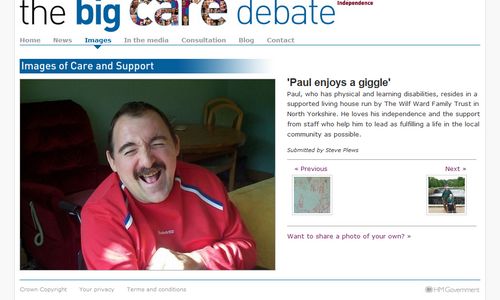
Over the last couple of months I’ve been working with Steph Gray and his BIS colleagues to build a modest little family of websites which could have far-reaching consequences.
As Steph notes on his own blog, I’ve long been musing openly about seeing corporate websites as clusters of smaller websites: making a virtue of the silo mentality, if you like. Give each sub-unit a full-featured website, with hands-on control of content, their own ‘latest news’ stream, the ability to activate and manage reader comments. Let the technology platform enforce a certain degree of consistency, and centralised control. Lay a unifying ‘front end’ over the top, to promote the day’s most important developments, and assist with search and navigation.
It also tied in neatly to a question I’ve been asked quite a few times lately: what’s the maximum number of pages a WordPress build can handle? In a single ‘page tree’, I’ve helped run sites with hundreds of pages – and whilst it’s perfectly serviceable, it’s hardly ideal. But maybe it’s the single page tree that’s the problem there. How about if, instead of a 100-page structure, you had 10 structures each of 10 pages?
The opportunity to test the theory arose when Steph approached me about BIS’s Science and Society site – which, as it happens, had been Steph’s first WordPress build (whilst still in DIUS). What better audience for such an experiment than the science community?
We replaced ‘ordinary’ WordPress with WordPress MU (‘multi user’), and I built a more flexible MU-friendly theme, maintaining the same basic look and feel. There’s a top-level ‘family’ navigation, representing the various individual subsites; and with a line or two of CSS, we can give subsite its own colour scheme. There’s a special ‘homepage’ template for subsite use, driven primarily by widgets. And at the top level, we’re actually aggregating the subsites’ RSS feeds to produce a ‘latest across the whole site’ listing and RSS feed.
It’s a tricky time to be doing the project, on numerous fronts. BIS are working on launching a redesigned (non-WP) site, hence the new blue branding along the top. WordPress v3.0 is on the horizon, integrating MU’s multi-user aspect into the core product, with as yet unknown consequences. Oh, and in case you’d missed it, there’s an election on the cards, not to mention a purdah period leading up to it – and who-knows-what afterwards. So things have been a bit quick-and-dirtier than I’d usually allow; but I saw no point getting bogged down in detail when everything could be up for grabs imminently.
Steph has used a deliberately provocative title on his post – ‘One day, all of this will be blogs.’ Is that an overstatement? Perhaps, but aren’t we seeing blogging steadily take over other forms of communication?
If teams really do want to connect with their stakeholders (hate that word), and operate transparently, and permit two-way conversations – this model would give them the platform they need. A single WordPress MU build makes the maintenance of the network (almost) as straightforward as a single blog – and allows a degree of control to be kept at the centre. The stakeholders can have all the RSS feeds and email alerts they could desire. It doesn’t resolve the human and organisational / cultural aspects: but it clears the way for those to be tackled, if we really want to.
I think it can work: it’s the logical ‘next step’ for WordPress’s journey into the corporate world, surely. Do I think it will work? I honestly don’t know. I’ll be watching with interest.


